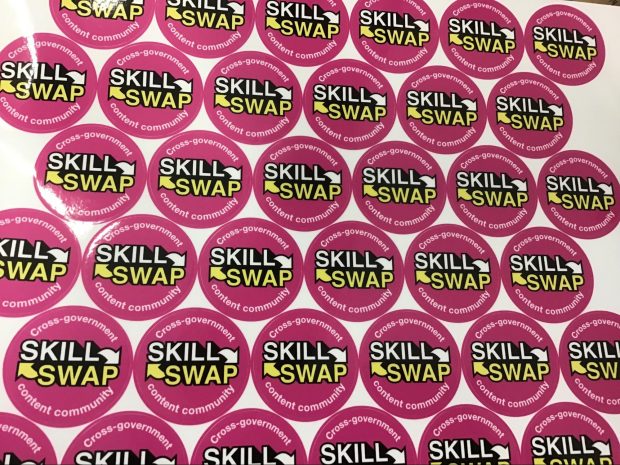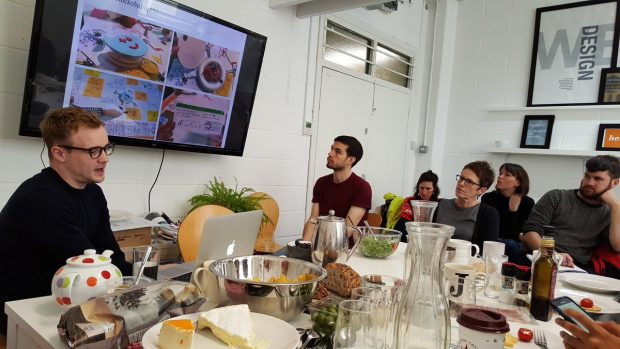Developing a learning approach for the content design profession
2 Sep 2019 01:59 PM
Blog posted by: Laura Billings – Community lead, GDS, 2 September 2019 – Categories: Content design, People and skills.
The content community team is working to build effective, adaptable and scalable learning experiences for content designers across the public sector. We're doing this work so that the content in online guidance and services is clear and user-centred, helping people get information and complete critical tasks more easily.
This is an update on our last blog post ‘We’re redesigning cross-government content learning’, where we described how the team was moving away from classroom training as the dominant approach, towards a broader model of learning – underpinned by the principles of learner experience design (LXD) and communities of practice.
LXD means putting learner needs at the heart of the design process, to create learning experiences that are engaging and effective. Bad LXD is when “not only did you fail to learn something, you had a horrible time trying”.
The content design community of practice is a group of people who share a profession and who learn how to do it better as they interact regularly.
Making learning work for everyone
The GDS Academy aims to make the most digitally skilled public sector in the world. The bit that our team focuses on is raising the level of content design – one of the user-centred design professions.
Civil servants and public sector colleagues are tackling complex issues in a fast-paced environment. Technological changes are shaping our jobs faster than ever before. So we need to create learning experiences that keep up.
We know that we aren’t always the content experts, because knowledge is being built collectively across the community. Sometimes we create the learning content for a course, like the required learning for GOV.UK publishers. Sometimes we fully co-produce the learning content with the community. And sometimes we create a framework in which people can share their knowledge, and community members themselves provide the learning content.
We also know that our learners are busy, and that taking the time and budget to travel to attend longer face-to-face courses isn’t always possible, or necessary. So we’ve looked at ways that learning can be more accessible to more people.
This has led to us developing a range of alternative learning formats.
Creating a new set of learning products and programmes

1. Self-study video tutorials for new GOV.UK publishers
To get a publishing account on GOV.UK, central government civil servants have to take and pass 2 self-study online modules that cover content design basics and how to use the publishing system. Departmental managing editors sign them up. Learners take the course at their own pace and in their own location.
Compared to the previous 2-day face-to-face classroom training, this version:
- saves government £40,000 a year in learner travel and accommodation
- reduces the time to get a publishing account from 6 weeks to 5 days
- frees 72 days per year that our team can now use to create learning experiences for the content design profession more widely
- is scalable up and down to manage peaks in demand
2. Online social courses for content designers across the public sector
Using online learning tools and the recaptured team capacity from the changes described above, we can now support more content designers. People who were previously blocked from attending resource-intensive face-to-face courses because seats were being prioritised for GOV.UK publishers, can now participate.
A pilot 'Introduction to content design' course on FutureLearn has shown us that:
- people can learn and apply new practical skills on a fully online course, and that online courses aren’t only suitable for knowledge transfer, as shown by the fact that learners were able to create their own browser prototypes to test content by editing HTML
- there is demand and need for more training in content design skills, as over 500 people applied for 100 spaces on the pilot and they come from a wide range of international governments, public agencies and local councils
- learners are engaged in this type of learning and willing to share good practice, and there were over 1,000 comments on the course from learners sharing knowledge with each other, and a 40% completion rate, compared to the 5% industry average
3. Reciprocal skill swaps
We ask content designers to name 2 things they want to learn more about, and 2 things they can show another colleague. We do our best to match everyone with someone to help, and someone who can help them. People commit to at least 1 hour together.
This framework allows content designers to:
- learn specific, practical skills from a peer at the time they need them
- benefit from increased connection and reciprocity across the community built by this purposeful network weaving
The content community team can:
- tap into powerful collective intelligence of the profession to help people address bespoke learning needs
- find external experts or produce learning content to cover learning requests that we can’t currently match from inside the community
4. Mentoring
Based on a recent pilot, we are now building streams of mentoring to support content designers throughout their career.
The early career mentoring pairs content designers with 2 or more years experience with people new to the role. In the current round, content designers from 17 departments and agencies are taking part. This also strengthens the community network and helps knowledge and experience flow between organisations.
The near peer skills exchange is mentioned above.
Potential future streams include cross-profession shadowing for content designers interested to move to a related user-centred design field. And action learning sets for people in senior roles who use less practitioner skills and more design leadership.
5. Live online learning
We are trialling 45-minute sessions covering topics sourced from the community. Sessions include input from community practitioners followed by practical activities that people do together online.
Feedback from a session on data-informed content showed that participants who can:
- name 3 or more ways data can be used to improve content went up from 31% to 85%
- understand the GOV.UK data tool and find the information they need quickly went up from 22% to 75%

Content designers on a field trip to UsCreates as part of the peer learning programme. Thanks to Robbie Bates for presenting.
6. Self-directed peer learning
In partnership with Enrol Yourself, a group of content designers explored their own learning questions together over 6 months, culminating in a showcase at the cross-government content conference.
This way of learning showed that people:
- were actively addressing real-world issues for which there is no standard training
- increased in workplace self-efficacy measures like ability to question the status quo, learn from mistakes and invent new ways of doing things
See the full impact report.
7. Cross-government design crits
A safe space for designers to share work in progress and get advice and feedback from peers. Run by the user-centred design community.
8. Cross-government content conference
And, of course… the massive peer learning festival that is ConCon!
What is next and how you can help us build it
We are:
- learning how each format works, to understand what is effective and what to scale or not
- working with heads of profession and the content design community to detail a learning curriculum based on the 'content designer' role description in the Digital, Data and Technology Profession Capability Framework
- figuring out a clearer front-end process for learners to find and register on the various learning experiences
- putting learners at the centre of everything we create and helping others do the same, by developing a new set of learning standards based on the methods behind the Service Standard
If you want to help us with the early first draft of the learning standards, you can email us.
To find out more about learning opportunities for content designers sign up for the monthly content community newsletter.
Laura is a community lead at GDS. You can follow her on Twitter.
A public service odyssey